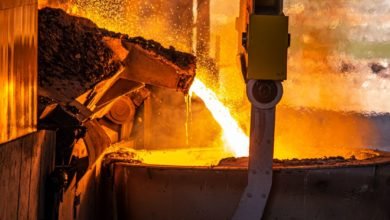7 Workforce Trends Workers Can Expect in 2022
This year is bringing with it a whole new outlook to work. The past decade has eroded suit-and-tie culture, and the COVID-19 pandemic has hastened revolutionary changes to corporate America. Startup culture continues to dominate, and Millennials and Zoomers (Gen Zers) have become the predominant workforce as Boomers retire en-masse. From jobs cubicles disappearing to jobs becoming more remote, everything has changed.
One thing that hasn’t changed, though, is human behavior. In the face of challenges, people will solve problems and get things done.
This demonstrates that not only will things continue to get better, but also that automation will not devour jobs, like many fear. Artificial intelligence and machine learning will open up new opportunities as the workforce grows and changes.
In this article, we’ll look at some of the most plausible predictions about trends in the job market and how things will continue to change.
1. The Great Resignation
The most sweeping and ongoing change that people are experiencing is the so-called “Great Resignation.” According to surveys, 44% of employees are “job seekers.” This means that almost half of employees are looking for a new job or plan to soon. Unemployment rates skyrocketed at the beginning of the pandemic when many businesses were shut down. Seemingly arbitrarily, many people found themselves without work depending on whether they were declared to be “essential” or not.
Higher pay, inflation, and more flexible work arrangements are all reasons people are looking for new jobs today. There’s no sign of this slowing down either—4.3 million people quit their jobs in January. In 2021, almost 48 million people quit.
The Great Resignation can be thought of as the result of many factors coalescing and manifesting themselves in the global workforce. As it shows no signs of stopping, the Great Resignation may just become the new standard of workers leaving jobs whenever they feel like it.
2. Workers Will Seek More Freedom
The Great Resignation is driven by the next factor. Workers want more freedom and independence. Many jobs went remote during the pandemic, and workers now expect that to continue.
The rise of flexible working hours means employees with an entrepreneurial spirit can build a business and start generating cash flow or pick up a side gig to earn extra income.
Building a business is a great way for workers to ditch the 9-to-5 grind and avoid the dreaded return to the office. Returning to the office can mean less quality time spent at home, more time commuting, and more time making others rich. Workers want to avoid spending hours in the car when they could be spending quality time with their friends and family.
For employers, the writing is on the wall. To retain talent, they will have to find ways to give employees more freedom and greater independence.
3. Automation and Tech Will Dominate
Another factor changing the landscape is greater automation and wider technology adoption. Automation and technology adoption doesn’t just mean more people are using digital calendars. It also means that employees are leveraging artificial intelligence, neural networks, and web microservices to assist them in doing their work. The coming of the Internet used to be called the information age, and today, now more than ever, this has become true.
Many companies acquire, process, store, and sell vast amounts of information. New opportunities also have appeared for workers that are more closely trained in these technology-based areas. Workers with experience in object-oriented programming languages are increasingly in demand. Today, there are job titles and fields that never even existed 30 years ago.
Today’s workers need to understand data and the technologies available to leverage data for a business. As cloud computing and remote work become more commonplace, these technologies will only become more important for employees to understand.
4. Demand for Benefits Rise
Another trend that can be expected to continue is that employees want greater benefits and income security. A great way to guarantee income security is with life insurance. For example, life insurance averages between $15 and $100 per month in Canada. Similarly, a healthy male can expect $21 per month in costs in the USA. However, with inflation approaching 8%, more employees are looking for jobs that can guarantee them sufficient income to cover their retirement years.
More benefits don’t just mean retirement plans. It can also mean health care benefits and better treatment overall. For example, poor work environments have been one of the main factors driving the unionization of Starbucks stores around the country. Either way, employers can expect employees to be demanding more.
5. Expect Even More Job Hopping
It’s not just that workers are looking for work in huge droves, but many workers aren’t sticking around even after getting hired. One big reason people are job-hopping is that they aren’t getting the benefits, work environment, or pay they desire. As Zoomers and Millennials build up their work experience, they often find that companies are willing to pay them more for their talent.
The conversation is also changing too. Once, it was taboo to discuss your pay, but now more people are turning to TikTok to discuss how much they’re making. Companies can no longer trick employees into staying in a dead-end job when information about pay, lifestyle, and work environment is publicly available.
6. Side Hustles Will Become the Norm
Many people are also turning to alternative sources of income. For example, buying and selling crypto is a great way to earn additional money that many people turn to. Others have leveraged their free time to build e-commerce websites, leveraging social media. Even jobs like driving for Uber or Lyft offer benefits and give employees more freedom than traditional jobs. The so-called “Gig Economy” is here to stay, and more and more people are finding ways to supplement their income.
7. Corporate Advocacy Will Continue to Grow
Social change is also key. Employees and society at large are demanding that corporations are held accountable for how their behavior impacts the world. For example, Disney workers began planning a mass walk-out in response to alleged failures of the company to support an inclusive work environment for LGBTQIA+ identifying individuals. Other companies have found themselves at the center of controversy for investing in fossil fuels and non-green energy sources.
Governments are also putting businesses’ feet to the fire. It was recently announced that the SEC proposed new climate disclosure rules that would require letting investors know about their carbon footprint. Whether or not people agree with these changes, one thing is for certain, demanding social change from companies is only going to continue.
Conclusion: We’re Living Through a Historic Upheaval
When it all comes down to it, workers are the ones making demands today. Surveys show that employees have more bargaining power than they ever had before. With more people demanding flexible work environments and better pay and automation and technology dominating nearly every field, it’s no wonder employees are switching jobs. As Boomers continue to retire, more changes are sure to be on the horizon as Millennials and Zoomers become the dominant workforce in the country.
Content syndicated from Fee.org (FEE) under Creative Commons license.
Agree/Disagree with the author(s)? Let them know in the comments below and be heard by 10’s of thousands of CDN readers each day!




